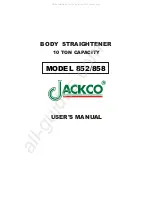
6/44
EN
Kinetec Kinevia™ / Kinetec Kinevia Duo™
Therapy using Kinevia
Therapy forms
The following forms of therapy are possible using Kinevia:
◦
Passive mobilisation using a motor drive
The limbs are put into movement by the force provided by the motor. Pedal acceleration and stoppage is gentle
and gradual.
The final rotation speed is reached at the earliest after 10 seconds.
The maximum rotation speed for passive training is 60 rpm.
◦
Active movement using the patient’s muscular strength
This type of movement can be carried out with more or less active muscle movement.
Two forms are available:
Assisted training: active movement with passive motor support
The active movements are supported by the passive motor force.
Active training: active movement with motor resistance
The muscles are subjected to a resistance which favours muscular development.
Resistance can be set to 20 different levels, comparable to changing gears on a bicycle. The higher the
level, the harder it is to pedal. This function is used to develop the muscles.
The device can be used in forward or reverse mode. An automatic change of rotation direction can also be configured
using the automatic rotation direction.
Antispastic and relaxation control
Kinevia is fitted with an antispastic control system which, if spasms are identified during passive mobilisation, is used
to stop the movement and then resume after a short pause.
When a spasm is identified, it is possible to configure whether the pedals should carry on turning in forward or reverse
or in the opposite direction. By default, the Kinevia will reverse the direction of rotation when a spasm is identified.
The relaxation program eliminates cramps and relaxes the muscles in the event of spasms. Depending on needs, the
antispastic control sensitivity can be adjusted to six level settings.









































